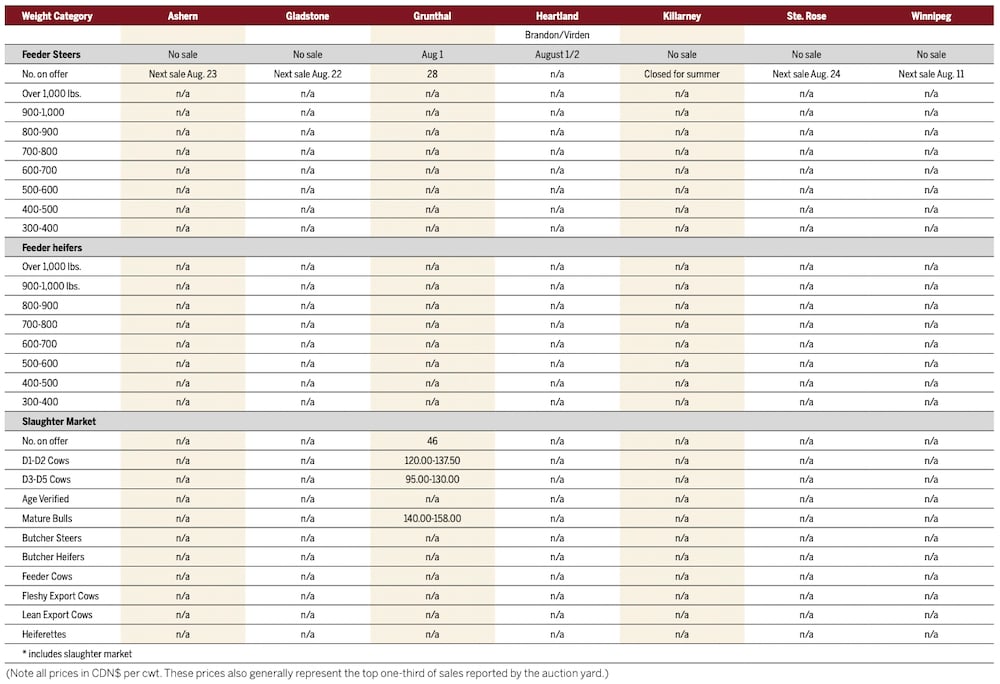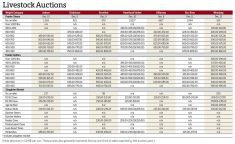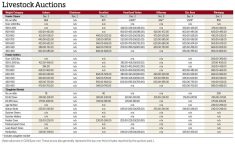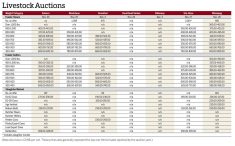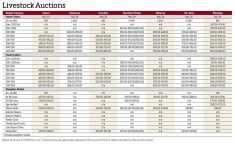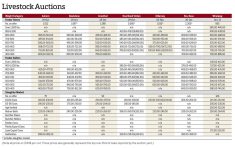It’s not the situation that faced Manitoba auction sites in 2021, when the summer break was cut short due to historic drought, but some sites this year will start the fall run a few weeks early.
The early start is due to ongoing heat and dryness experienced for much of this summer, particularly in southwestern Manitoba. Gladstone, Ashern and Ste. Rose auction marts will resume regular sales on Aug. 22, 23 and 24, respectively.
“It may be a couple of weeks early, but definitely with the weather being so erratic across the Prairies – some areas got hit with timely rains and others are burning up – we want to be open to accommodate those who need [to] market any cattle due to weather conditions,” said Tyler Slawinski, auctioneer at the Ashern and Gladstone auction marts.
Read Also

Foggy grain market predictions for 2026
Many factors are pushing and pulling at grain markets as farmers leave 2025 behind and start considering what 2026 will bring.
Despite conditions, Slawinski said he doesn’t know of any herd dispersals due to dryness and described the current feed supply as abundant.
“Things are shaping up to be a really good year,” he said. “I know there’s a lot of pressure in the western Prairies on slaughter cows. I think they’re a lot worse off when you get further west into some of those drier [areas] such as Swift Current, [Sask.]”
On the Chicago Mercantile Exchange, the October live cattle contract increased by US$1.80 per hundredweight during the week, to close at $181.30 on Aug. 3. On the same day, the September feeder contract closed at $251.65/cwt., representing a weekly rise of $3.37.
Slawinski believes supply and demand may take prices higher entering the fall run, but said it is still difficult for cattle producers to make a profit.
“Cull cow prices are going to hinge around slaughter prices, with some exceptions of premium prices for premium cattle,” he said.
“But the feeder market is bound to be very strong. Prices are very high in retail stores and, ultimately, that trickles back onto the cattle producer because the cost of production is very high… The producers need every dollar going forward to make a living out of this.”
At the start of the fall run, Slawinski expects some slaughter cattle to return to market, along with a small yearling run.
“The cost of the yearlings was quite high when people were putting them in,” he said. “Lots of guys didn’t take advantage of the high prices [before], so lots [of yearlings] are going to be pre-sold.”
Jerry Klassen of Resilient Commodity Analysis in Winnipeg said more cattle will enter the market later in August, which may put a cap on prices.
“We may have a little bit more upside over the next couple of weeks, but the yearling market is always the strongest in August. Realistically, I think the market is still in price discovery and it looks like the U.S. cattle herd is still in contraction,” he said.
“I think the yearling market will peak out around the second or third week of August. We’re looking for a significant year-over-year decline in beef production in the first half of 2024. That’s going to keep the feeders well supported.”


